Here's everything we know about how San Francisco is battling the coronavirus pandemic
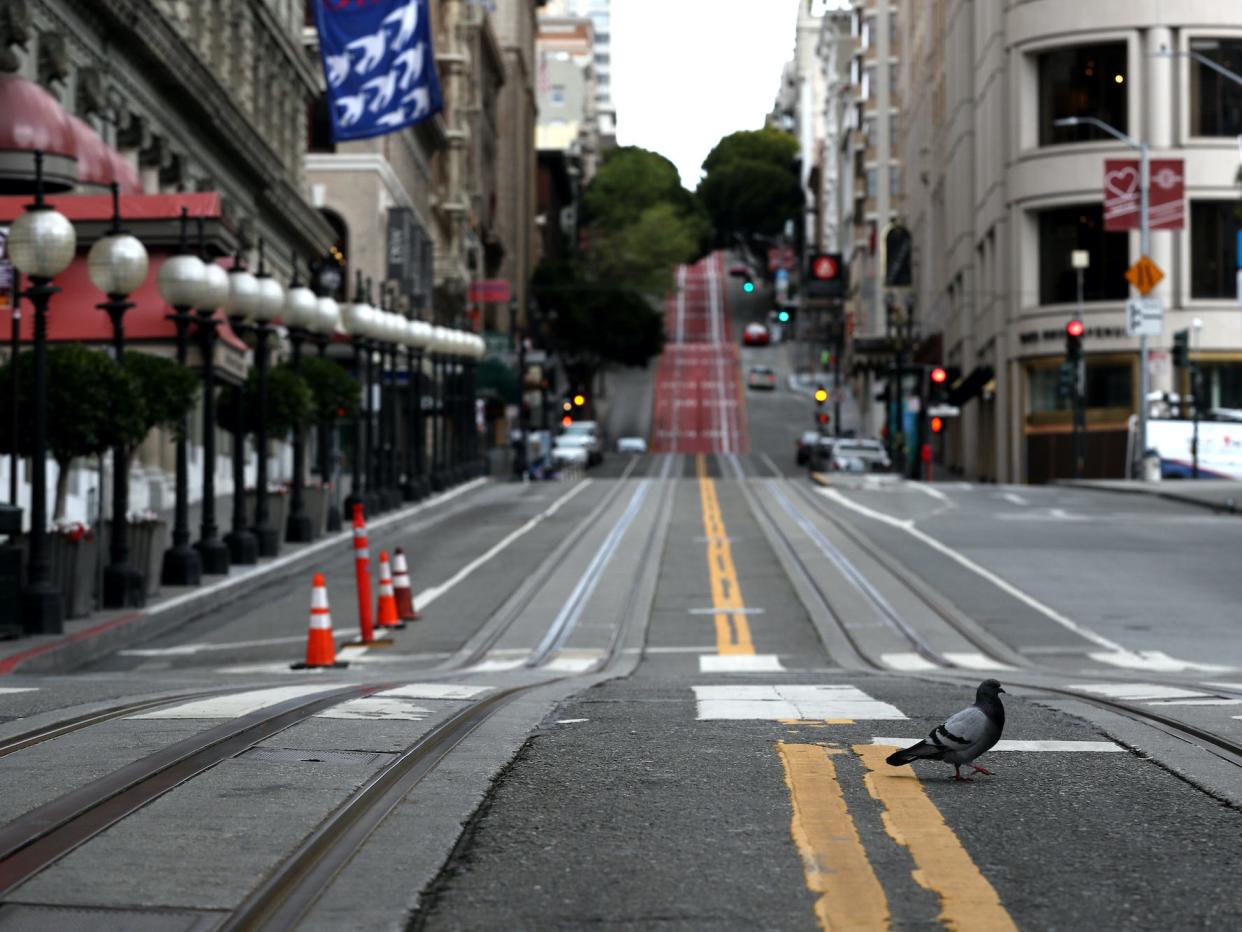
Justin Sullivan/Getty Images
The coronavirus disease has transformed life in the San Francisco Bay Area, as well as elsewhere in the world.
San Francisco declared a state of emergency in February and was one of many Bay Area counties to enter a shelter-in-place order on March 17.
Mayor London Breed is now mulling over whether or not to sign an emergency measure that would require the city to rent 7,000 hotel rooms to house its entire homeless population.
There are now at least 1,058 confirmed cases of the virus in the city.
San Francisco now has 1,058 confirmed cases of the coronavirus disease, known as COVID-19, as the respiratory illness continues to spread across the country and the world.
The World Health Organization officially declared the virus a pandemic as it has infected more than 667,000 in the US, surpassing China as the world's largest outbreak.
From its involvement in early regionwide efforts to enforce social distancing to how city leaders have argued about how best to protect its homeless residents, here's how San Francisco has addressed the coronavirus pandemic and is gearing up to continue fighting the disease.
San Francisco was one of the first US cities to declare a state of emergency on February 25.

Steve Jennings/Getty Images for TechCrunch
San Francisco Mayor London Breed declared a state of emergency in the city, saying that "the global picture is changing rapidly, and we need to step up preparedness."
"We see the virus spreading in new parts of the world every day, and we are taking the necessary steps to protect San Franciscans from harm," she said.
The mayor's state of emergency allows the city to expedite and prioritize emergency planning by redirecting employees and resources in the case of an outbreak in San Francisco, Business Insider's Avery Hartmans and Katie Canales reported.
San Francisco is geographically one of the closest cities in the US to China, and the high amount of travel between the city and China was a factor in the decision.
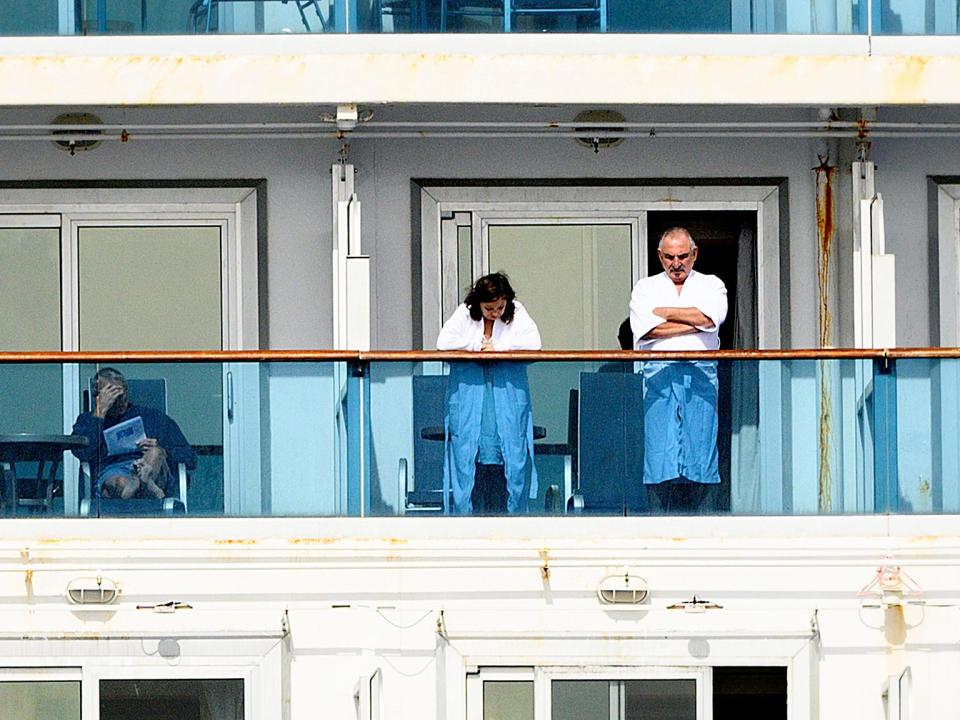
Associated Press/Noah Berger
About 150 passengers that were aboard the Diamond Princess cruise ship were brought from Japan to the Travis Air Force base in Fairfield, California, about 55 miles outside of the Bay Area on February 16. They were quarantined at the base for 14 days and released on March 2.
Another coronavirus-stricken cruise ship, the Grand Princess, docked in Oakland across the bay from San Francisco on March 9 with 2,422 passengers on board, 942 of which are California residents. Twenty-one people on the ship have tested positive for the virus. Sick passengers were taken to local hospitals and the rest were under quarantine for 14 days at US military bases, with some at Travis Air Force Base.
Two-thirds of passengers who were quarantined there declined to be tested for the coronavirus so that they could go home sooner. Some of them have been released, according to the San Francisco Chronicle.
For San Franciscans, as well as others across the globe, "social distancing" became the norm in a bid to help contain the disease as much as possible.
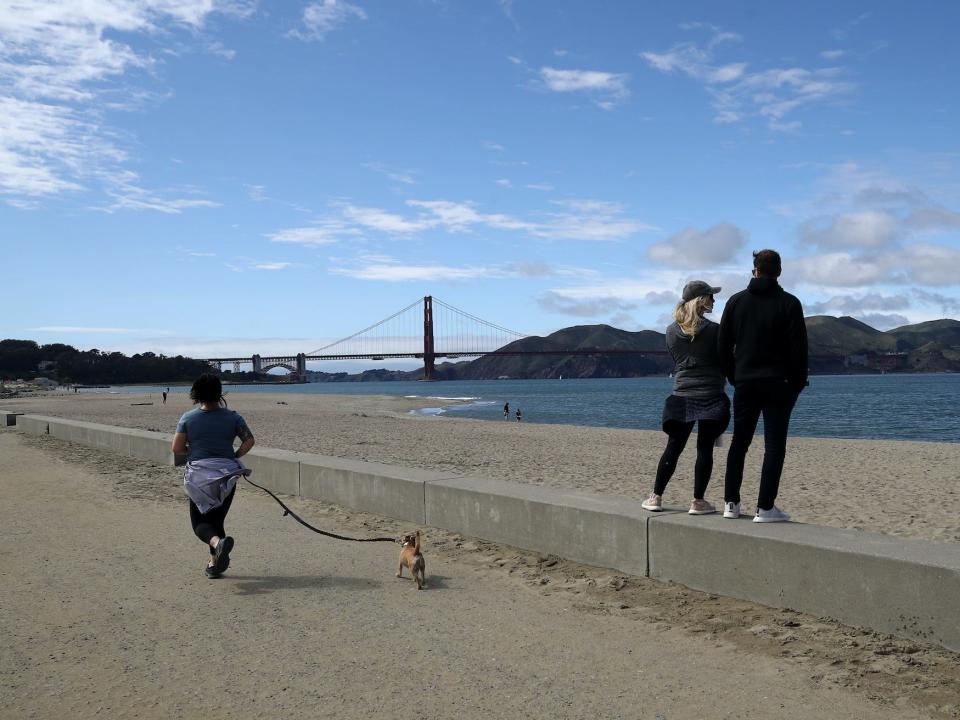
Katie Canales/Business Insider
Source: Business Insider
Major tech conferences in San Francisco and elsewhere were canceled in an effort to avoid large gatherings amid the viral outbreak.
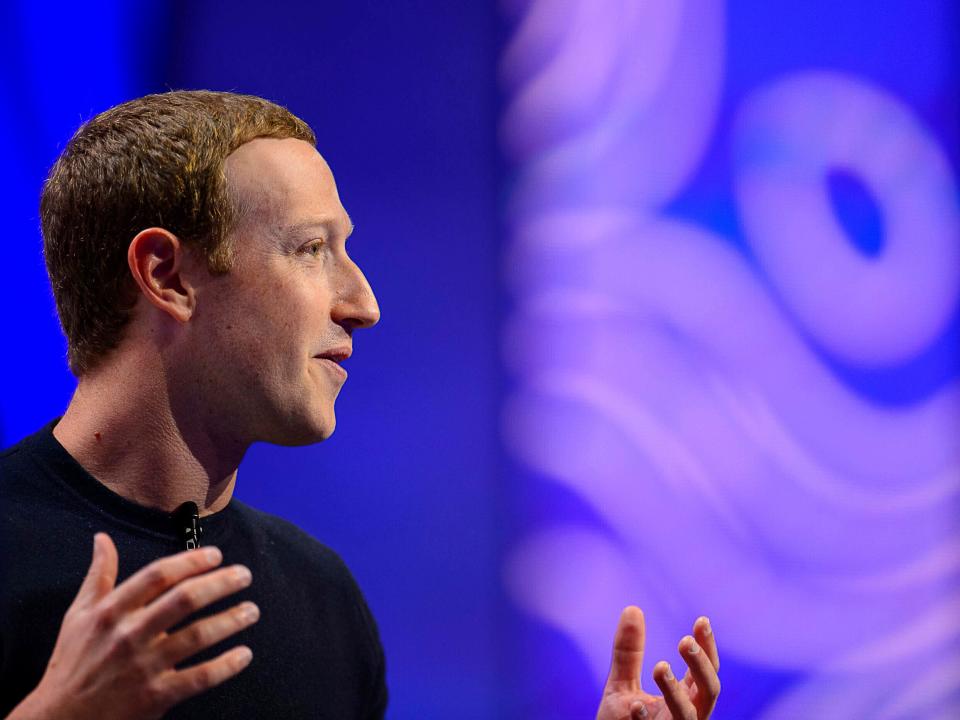
Associated Press
Remote work culture also started taking hold in San Francisco in February as companies began mandating that employees work from home amid the outbreak.

Katie Canales/Business Insider
The CDC issued new guidelines in late February advising businesses to rely more heavily on remote work options, a feat that Google, Twitter, Apple, and others are following.
It's an adjustment for many tech workers who have long relied upon in-office perks, like free lunches.
Tech companies with San Francisco footholds like Apple, Amazon, Facebook, Salesforce, and Google have restricted travel for employees.
On March 5, the first two confirmed cases were found in San Francisco.
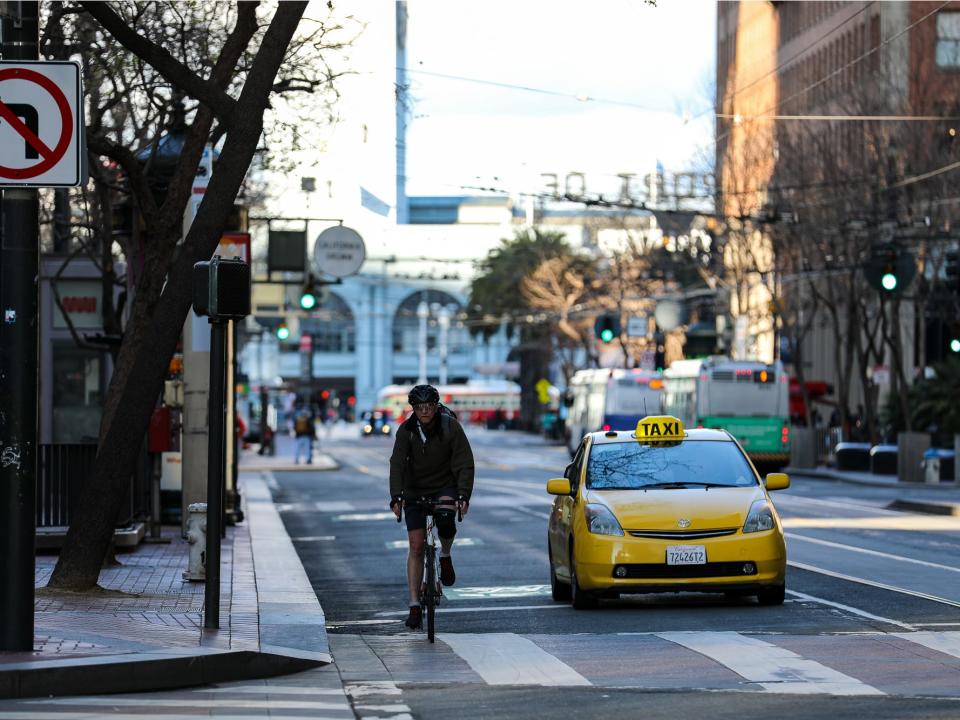
Katie Canales/Business Insider
Neither patient had traveled to a location with a known coronavirus outbreak or come into contact with someone who had tested positive, meaning they likely contracted the virus through community transmission.
The city started implementing measures to prevent mass gatherings following the news of the first two confirmed cases.
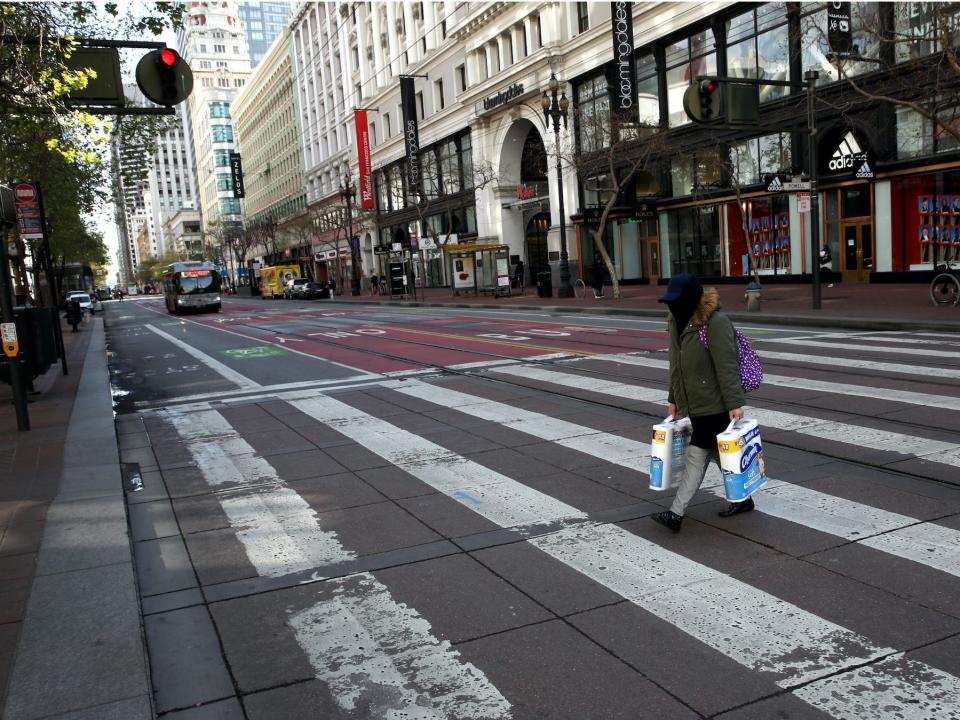
Katie Canales/Business Insider
City leaders banned non-essential events held in city-owned facilities for two weeks starting on March 7.
A "non-essential group event" was defined as a gathering of 50 people for social, cultural, or entertainment events "where people are not separated by physical space of at least four feet," or about arm's length, according to NBC Bay Area.
The facilities implicated by the order include City Hall, the San Francisco Public Library, the Palace of Fine Arts Theatre, and Moscone Center, a venue in the city's SOMA district where many tech conferences are usually held. The city's St. Patrick's Day Parade was canceled as were symphony events and ballet performances.
Then on March 11, San Francisco banned all large private and public gatherings exceeding 100 people.
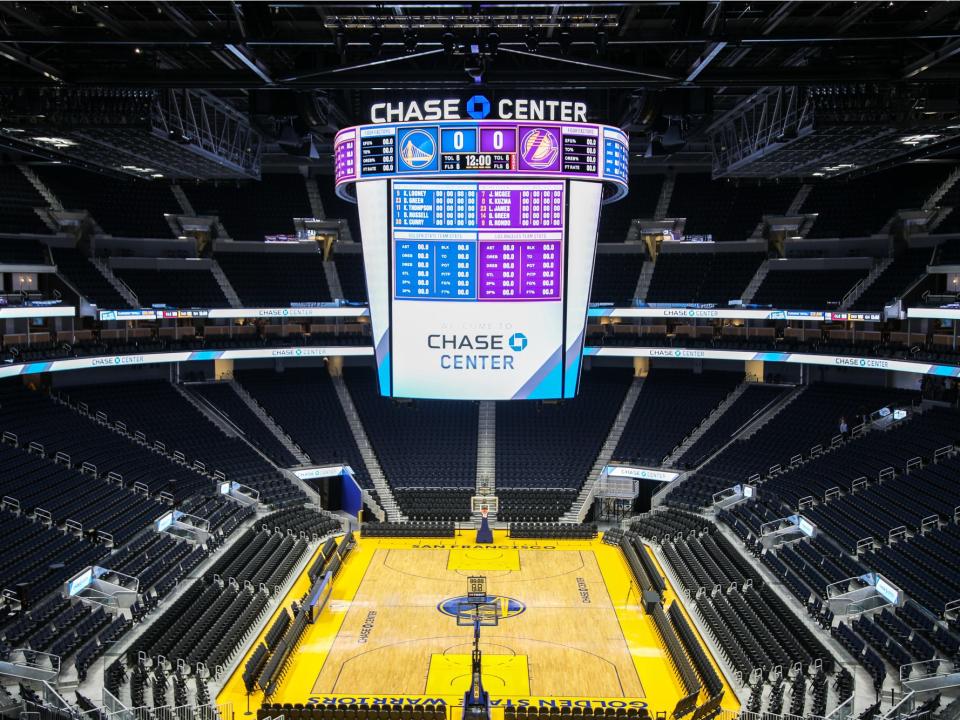
Katie Canales/Business Insider
"This is necessary to slow the spread of COVID-19, and builds on our previous public health recommendations," Mayor Breed wrote on Twitter.
The ban included events such as Golden State Warriors games.
Steps have also been taken to protect San Francisco's most vulnerable residents that comprise its homeless population.

Justin Sullivan/Getty Images
The city announced on March 9 that it was spending $5 million to hire cleaning crews to regularly sanitize homeless shelters, supportive housing buildings, and SROs daily.
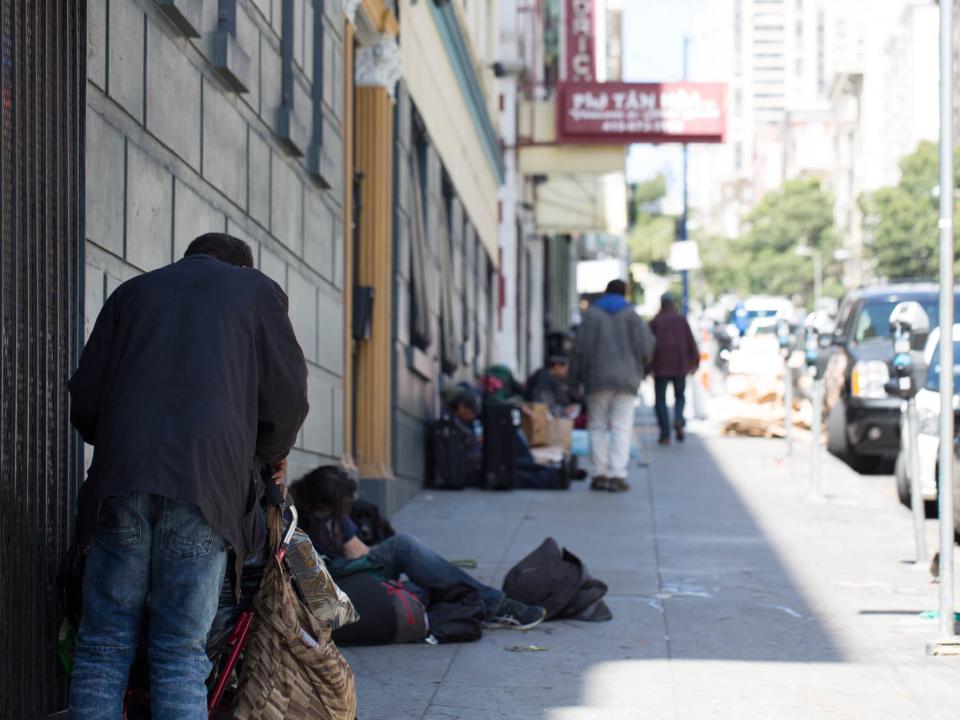
Melia Robinson/Business Insider
The funding was designed to allow the city to keep up with the daily cleaning and the around-the-clock shelter hours for a few months, according to the San Francisco Chronicle.
Those living on the streets are more at risk of contracting infectious diseases such as the coronavirus, in San Francisco and in other US cities.

Justin Sullivan/Getty Images
A 2019 count placed the number of homeless individuals in the city at 8,011.
Many don't have the luxury of taking the recommended precautions to avoid contracting COVID-19, like handwashing and keeping a distance from sick people, as Business Insider's Holly Secon reported.
To further promote good hygiene practices for residents, city leaders placed 20 handwashing stations around the city in early March.
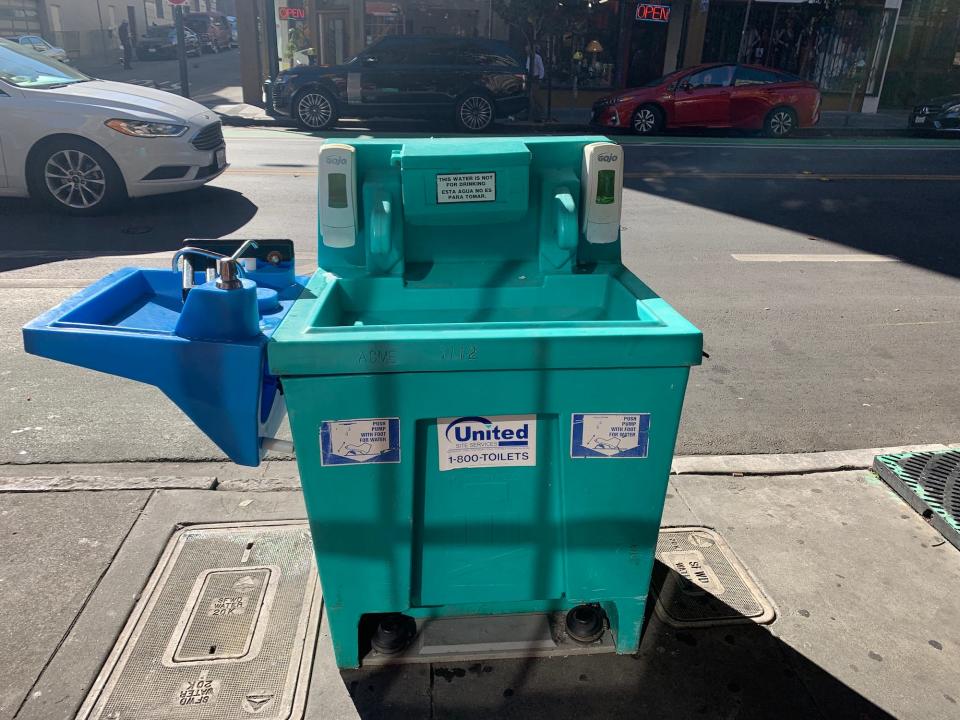
Katie Canales/Business Insider
The best way to fight the spread of the coronavirus disease, as health officials have repeatedly said, is to wash your hands.
Per recommendations by the Centers for Disease Control and Prevention, take a generous amount of soap, and scrub thoroughly while reciting the "Happy Birthday" song or another 20-second tune.
On March 13, Mayor London Breed announced a moratorium on residential evictions "related to financial impacts caused by COVID-19."
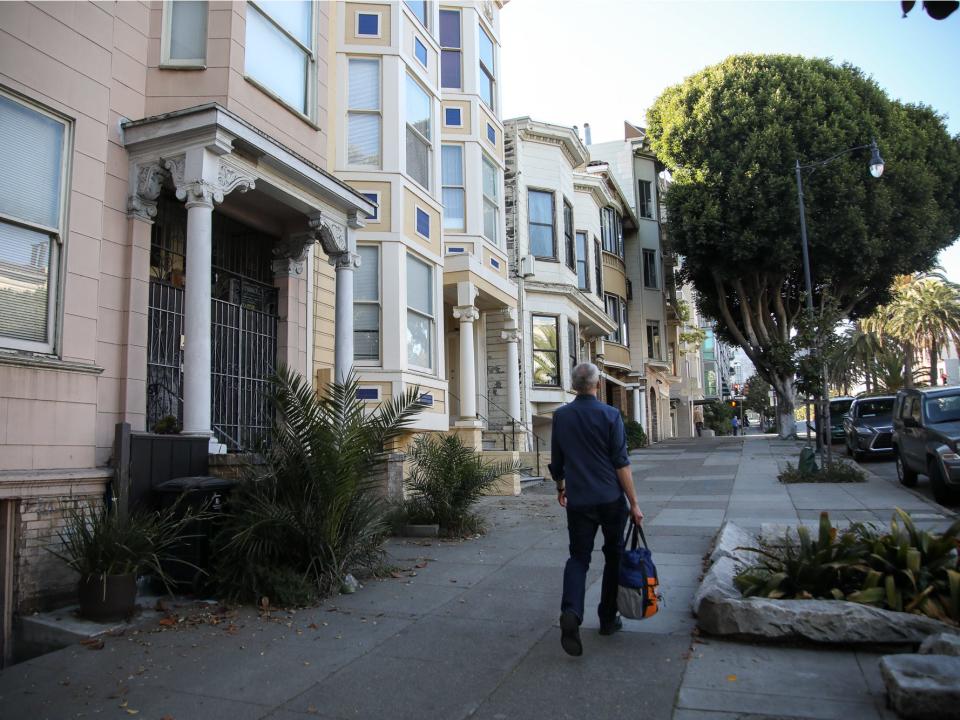
Katie Canales/Business Insider
Financial impacts include "a substantial loss of household income due to business closure, loss of compensable hours of work or wages, layoffs, or extraordinary out-of-pocket medical expenses," according to the Mayor's office.
By Monday, March 16, there were 37 confirmed cases of the disease in San Francisco, up from two just 11 days before.
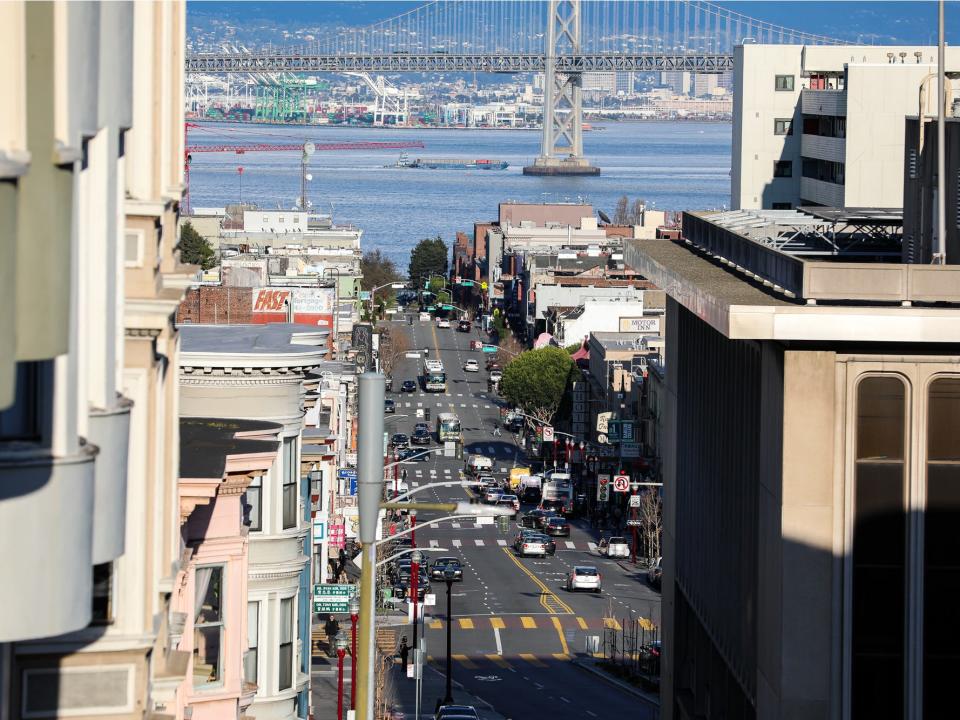
Katie Canales/Business Insider
That was the day that public health officials across the San Francisco Bay Area announced a shelter-in-place order would go into effect on Tuesday, March 17 throughout the region.
—London Breed (@LondonBreed) March 16, 2020
The directive was to expire on April 7, though that deadline has since been extended to at least May 3.
The directive is not a full lockdown, so people are not prohibited from leaving their homes without government permission. Instead, they're directed to stay inside and avoid contact with others as much as possible for three weeks.
As the Chronicle noted, the affected population totals more than 6.7 million people. The order is mandatory, and failure to comply is be considered a misdemeanor crime, according to the city. Officials initially relied on resident compliance instead of stringent law enforcement of the order, though there have been reports of violators receiving citations.
Residents are allowed to leave their homes for essential needs.
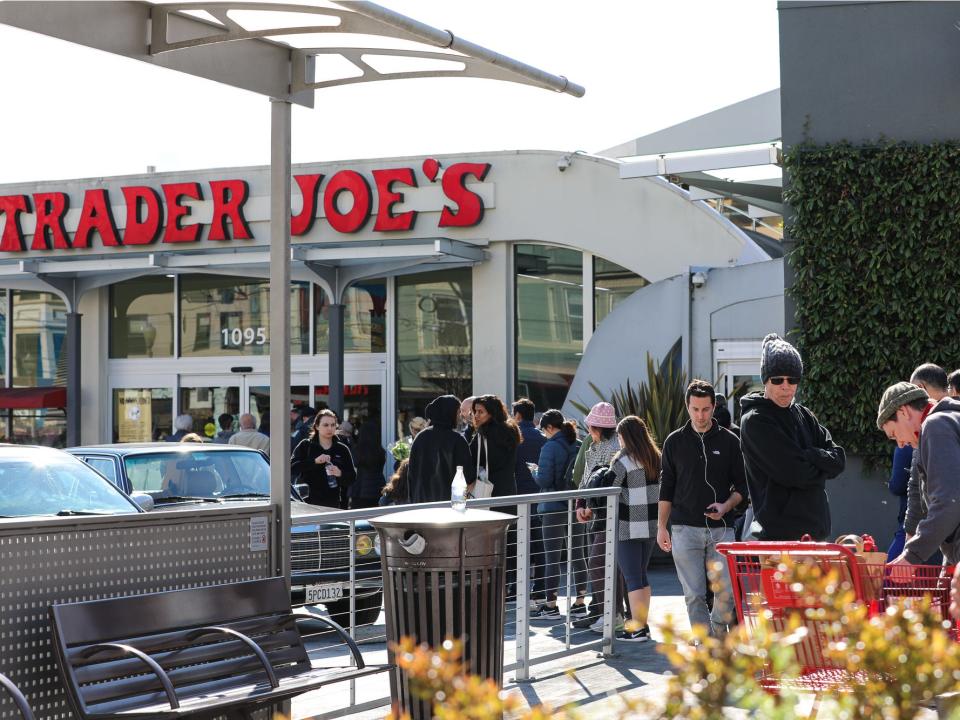
Katie Canales/Business Insider
That includes obtaining medicine, food, and supplies for household members — including pets — seeing a doctor, and caring for a relative who lives in a separate household.
Everyone must work from home or stop working, except for those providing essential services, like healthcare workers, law-enforcement officials, and firefighters and emergency responders, according to the order.
Nonessential travel on foot or via scooters, bicycles, cars, and public transportation is also banned — though public transit remains open for essential travel. Walking, running, taking a pet out to go to the bathroom, and hiking are still allowed, as long as people keep six feet between themselves and others.
All nonessential events of any size are prohibited. The city is telling residents that trips to the nail salon and dinner parties or house visits are also not allowed.
Bars, nightclubs, entertainment venues, gyms, and fitness studios are closed.

Katie Canales/Business Insider
San Francisco's restaurant and bar scenes were already being slammed by the shelter-at-home order, with layoffs ensuing and sales plummeting. Mayor London Breed has introduced a number of ways to keep small businesses from going under, like ushering in a moratorium on commercial evictions. But business owners in the city don't think that will be enough.
"I would say about 50 percent of bars and restaurants are facing existential destruction," San Francisco bar owner Ben Bleimans told Eater SF.
The state of California is temporarily relaxing rules for bars, restaurants, and liquor stores to sell alcohol for pickup or delivery in an attempt to boost sales. Businesses can sell pre-packaged alcohol as long as it has a lid or a cap.
Restaurants are allowed to stay open, as long as they only provide takeout food.
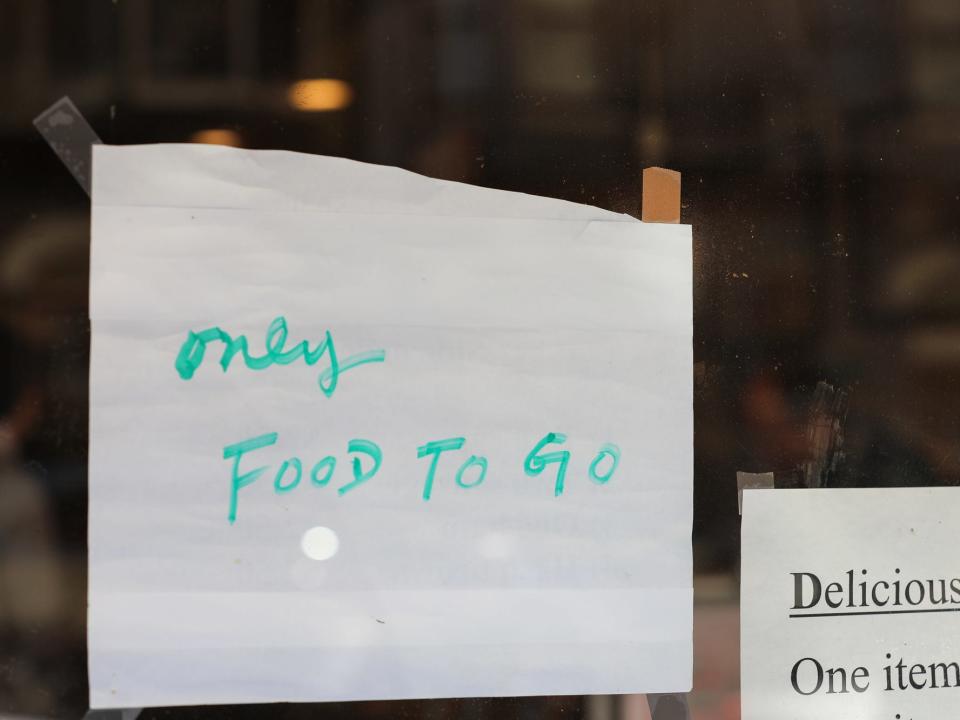
Katie Canales/Business Insider
City and county government services — like fire and police stations — grocery stores, hospitals, banks, pharmacies, hardware stores, daycare centers, and veterinary offices will stay open, with some restrictions. Laundry services will also stay open.
San Francisco's 113 public schools are closed.

Justin Sullivan/Getty Images
The closures affect the estimated 57,000 students of the city's public school system. Ninety Bay Area Catholic schools had already closed on March 10 after one student tested positive for the virus.
Many San Franciscans who are also parents are now juggling adjusting to working from their homes and enforcing digital learning for their kids.
The Bay Area region has been lauded nationally for its quick thinking in implementing social distancing early on.

Justin Sullivan/Getty Images
San Francisco specifically was dubbed "The City That Has Flattened the Coronavirus Curve" in a recent article by The Atlantic, though the city was one of many in the Bay Area included in the region's early actions such as the shelter-in-place order.
An article was then published by Mission Local decrying the rosy picture painted of San Francisco in The Atlantic as a "fable." In the article, the local publication notes that city leaders have failed to account for a large community within its limits: its homeless residents.
The city's — and region's — homeless population was exempt from the shelter-in-place order, with those living on the streets instructed to sit tight until officials could come up with ways to house and protect them.
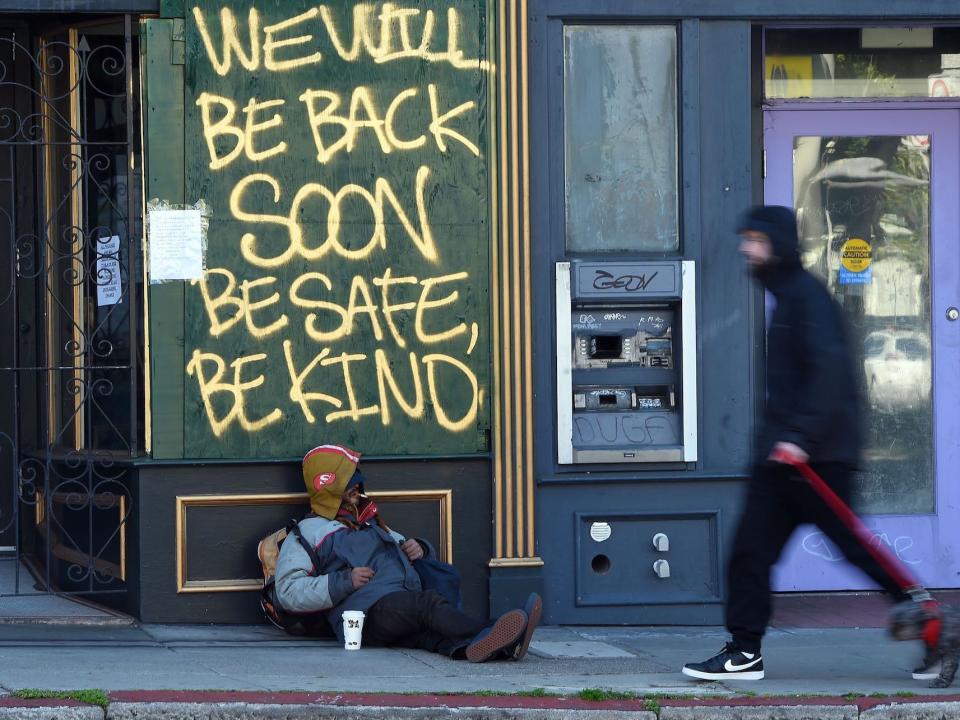
JOSH EDELSON/AFP via Getty Image
In the weeks following, San Francisco city officials have considered using shut-down schools, churches, the Moscone Center, the Palace of Fine Arts, and the Bill Graham Civic Auditorium to house its homeless community.
The purpose of using some of those facilities was to help space out shelter beds in existing shelters so that the homeless could have more room to social distance from one another.
But then a report by the StreetStreet, a publication run by the Coalition on Homelessness, included a photo of the Moscone shelter showing thin mats spaced six feet apart with tape. The report also detailed other aspects of the camp-like living conditions, such as limited bathrooms.
The city backtracked on its plans for the mega-shelters after that.
The city's thousands of unoccupied hotel rooms have also become a viable option.
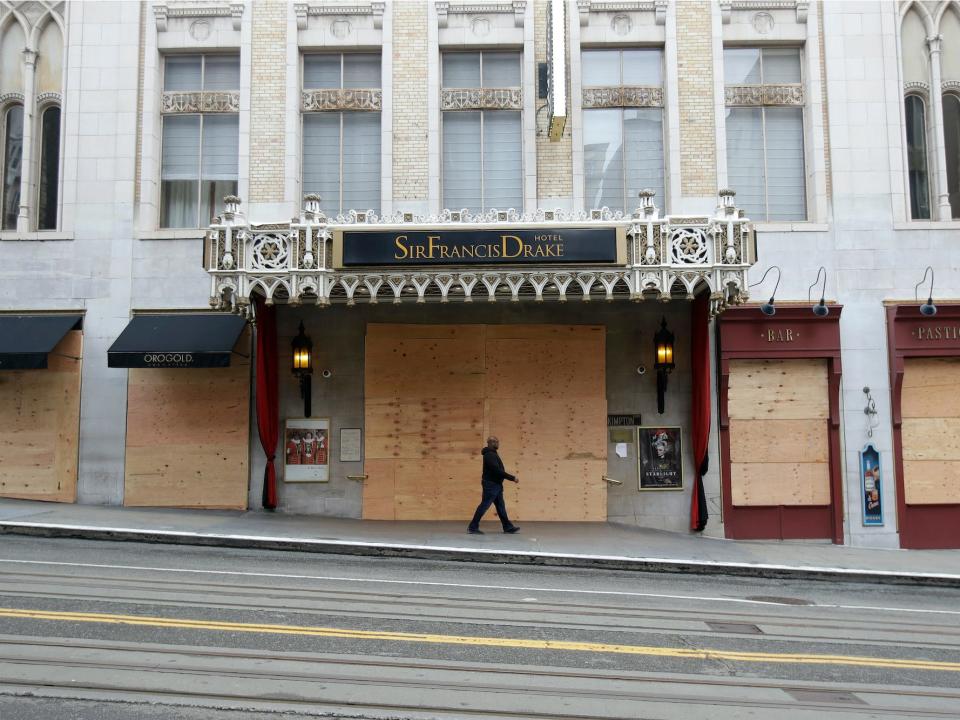
Jeff Chiu/AP
Travel and tourism have been hit hard amid the coronavirus pandemic, rendering hotels in San Francisco virtually empty.
Currently, only those who are over the age of 60, have underlying health issues, or those who have tested positive or have been exposed qualify for a hotel room. But some officials and homeless advocates have been calling for the city to house its homeless residents in individual hotel rooms for weeks as a preventive measure during the coronavirus outbreak.
That's a course of action that Breed has not been on board with. On April 3, Breed said despite the pandemic, there are limits to how officials can house people. "We are not going to be able to solve our homeless problem in San Francisco with this crisis," the mayor said.
But an emergency ordinance passed on Tuesday that would require the city to find and rent 7,000 hotel rooms to house its entire homeless community. The mayor will either decide to sign it or veto it.
If she vetos the bill, the board could still overrule her. But an alternative could be to use privately owned property in the city for emergency housing purposes.
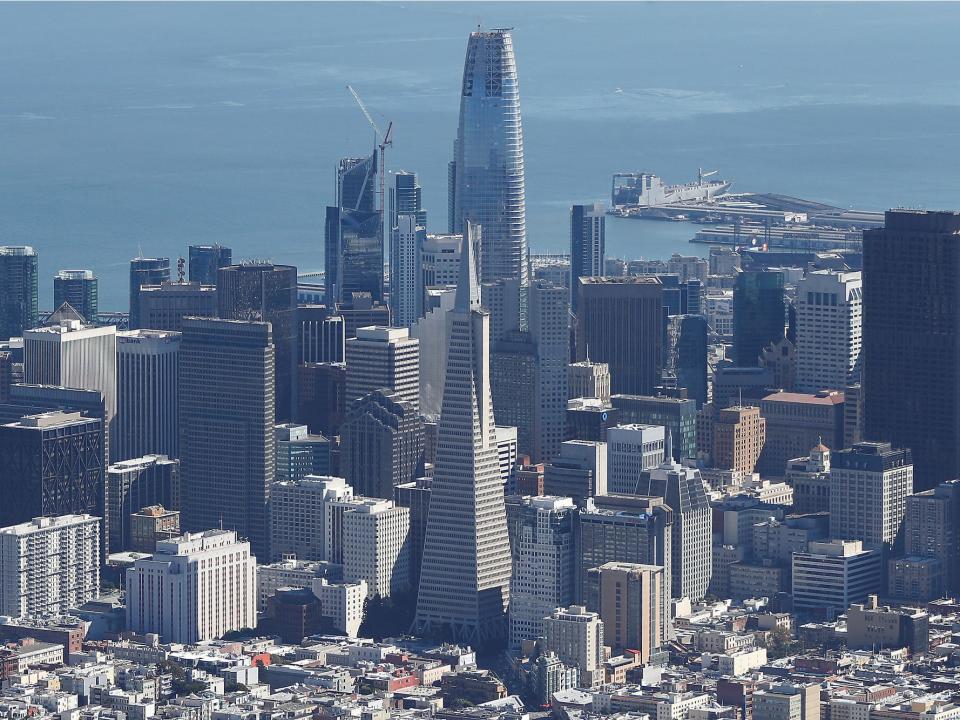
Stephen Lam/Reuters
San Francisco can commandeer privately owned property to use during an emergency, including this coronavirus pandemic. The city would need to compensate property owners, and violation of a commandeer order issued by the mayor or county health officer could be punishable by $1,000 in daily fines, jail time, or both.
Among the city's myriad privately owned buildings are the headquarters of the region's tech giants, like Salesforce Tower in its East Cut neighborhood and the Twitter building in Mid-Market.
An outbreak has already hit the homeless community.
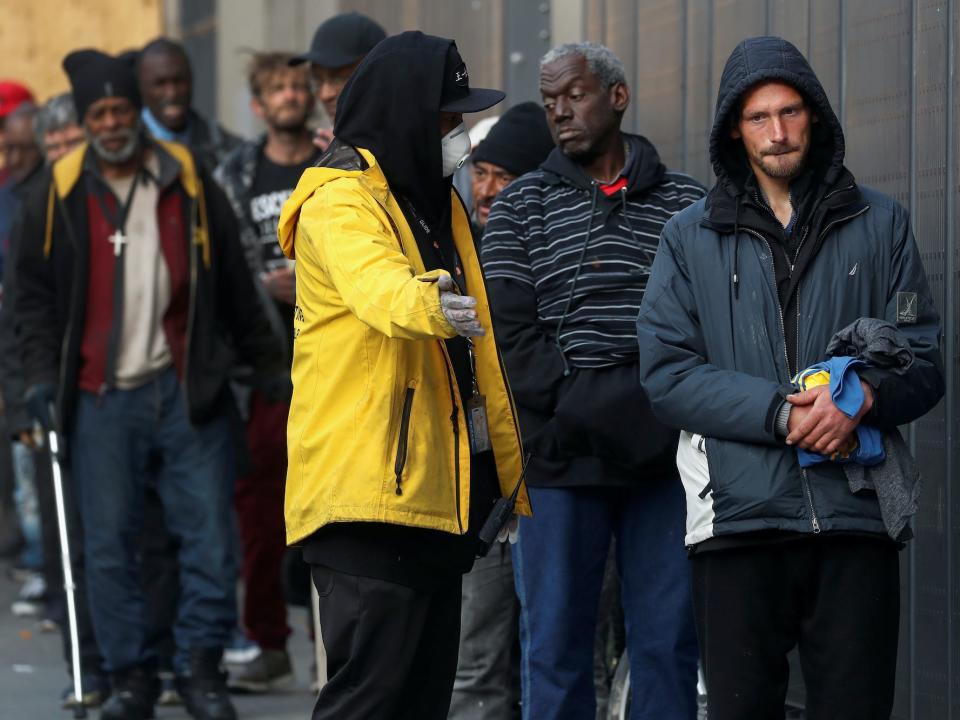
Shannon Stapleton/Reuters
On April 2, the first positive case in a San Francisco homeless shelter was found at the city's Division Circle Navigation Center. And on April 6, two more cases were confirmed at MSC South, the city's largest homeless shelter. Then on April 10, 70 people at that shelter were reported to have tested positive, a number that has since swelled to at least 100.
At least 23 residents living in SRO hotels have also tested positive.
San Francisco's public transit has seen ridership plummet since the order went into effect.
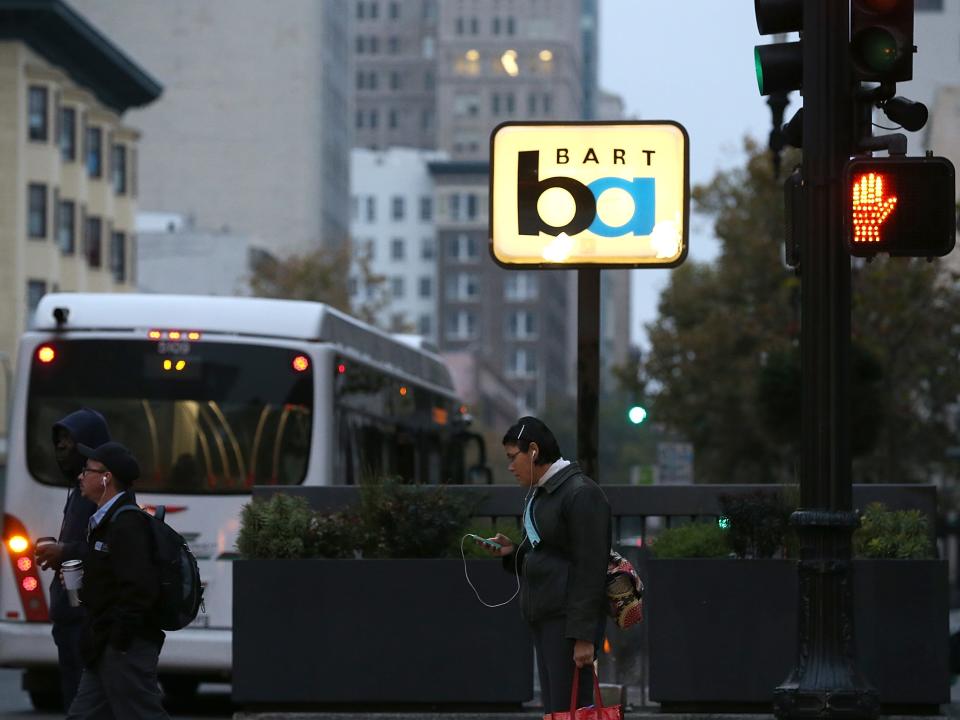
Justin Sullivan
Public transit has remained open during the shelter-in-place order for those providing essential services, like grocery workers. There are more than 20 transit operators in the Bay Area, all of which have taken a hit as its usual riders have stopped coming into the office.
The largest operator, BART, has seen ridership drop and is losing an estimated $57 million a month in sales taxes, fares, advertising revenue, and parking fees.
The city's public transit system, Muni, has reported an estimated weekly loss of $1 million since residents have been directed to stay in their homes to inhibit the spread of the coronavirus disease. Only 17 of the 68 Muni bus routes are currently still operating.
San Francisco's iconic Golden Gate Bridge is also suffering as commuters that typically cross its span stay home.
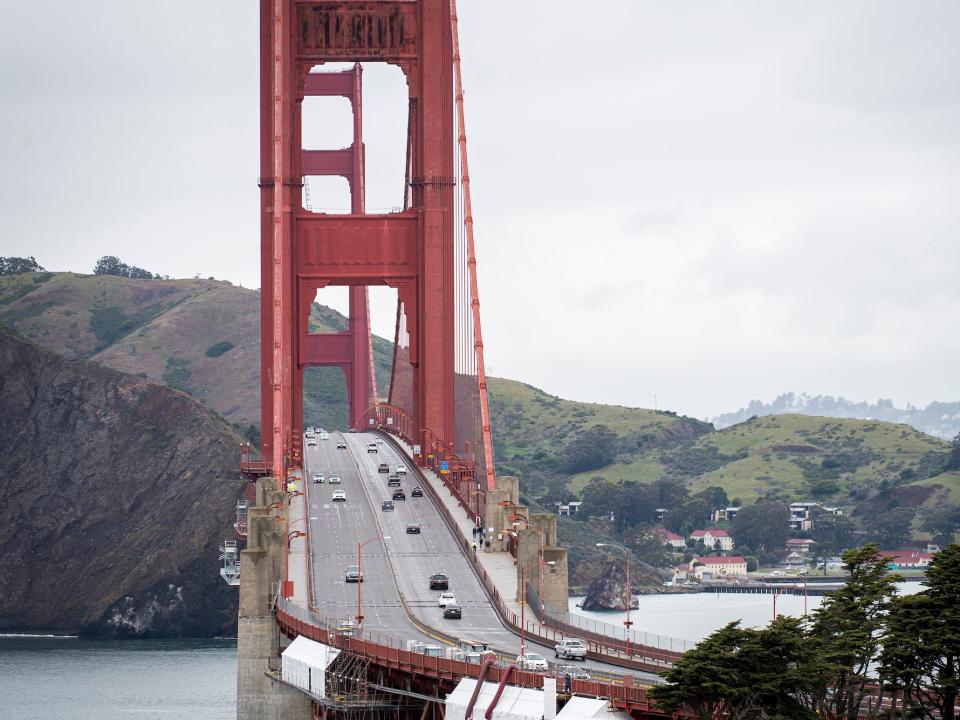
David Paul Morris/Bloomberg/Getty Images
The governing body that oversees the bridge is losing $300,000 a day in toll revenue.
Drive-thru coronavirus test sites have been set up in San Francisco to increase testing capacity.
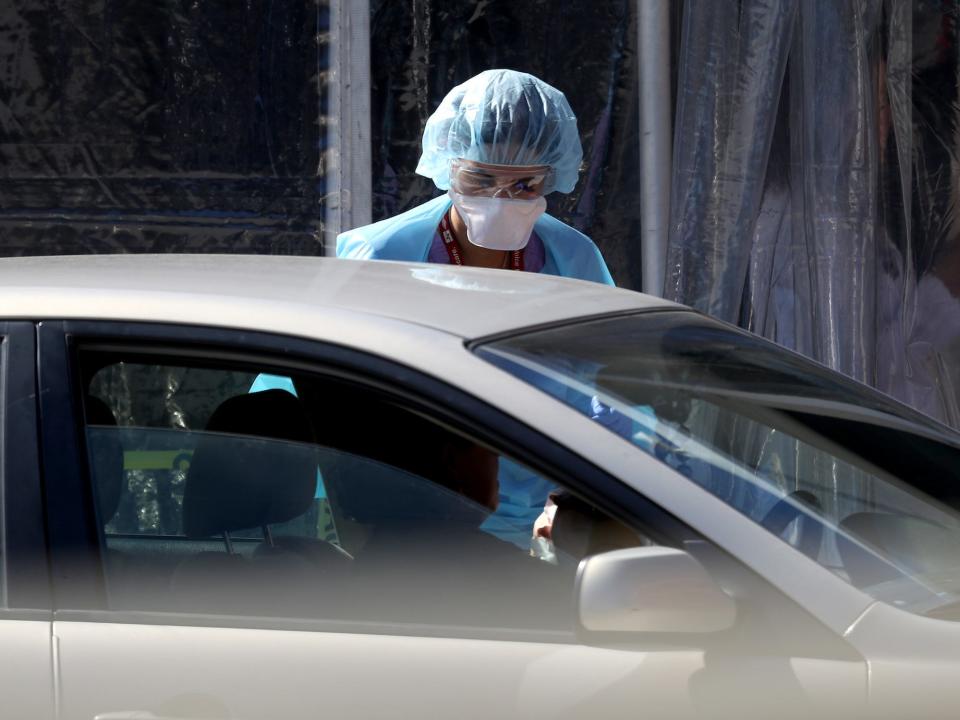
Justin Sullivan/Getty Images
The sites are designed to keep patients with respiratory symptoms away from medical facilities where they could potentially pass the virus on to others. Patients with doctor's orders can drive up and provide samples swabbed from the throat or nose onsite, according to a San Francisco Chronicle report.
San Francisco has also hired 82 nurses to help boost hospital staff in the city as more confirmed cases crop up.
The regionwide shelter-in-place order has been extended through April, but California Gov. Gavin Newsom detailed a plan Tuesday for eventually loosening statewide restrictions.
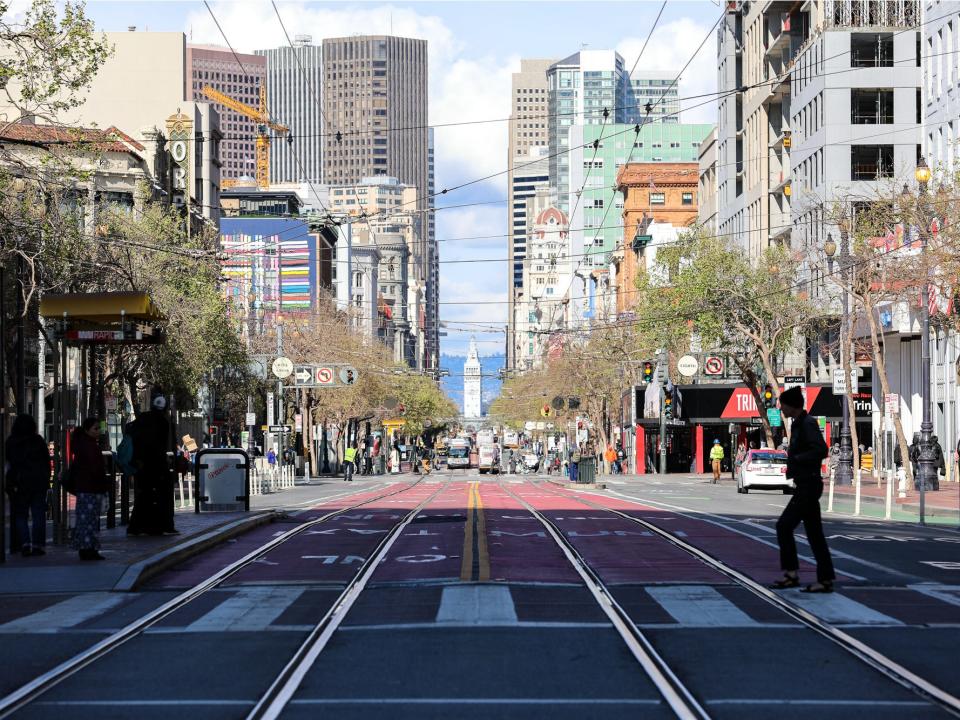
Katie Canales/Business Insider
He said it would be more of a matter of "toggling" between loosening restrictions and tightening them again as the state explored how best to exit the stay-at-home order. Residents would need to continue to comply with the stay-at-home order, and hospitalization and intensive-care numbers would need to not only flatten but decline.
The governor did not attach a timeline to it, but he did say this was an "optimistic" plan for California. Newsom invited reporters to "ask me the question again" in two weeks to see how the state was doing relative to meeting the minimum requirements to consider loosening the restrictions.
"This can't be a permanent state, and I want you to know that it's not," Newsom said.
Read the original article on Business Insider

